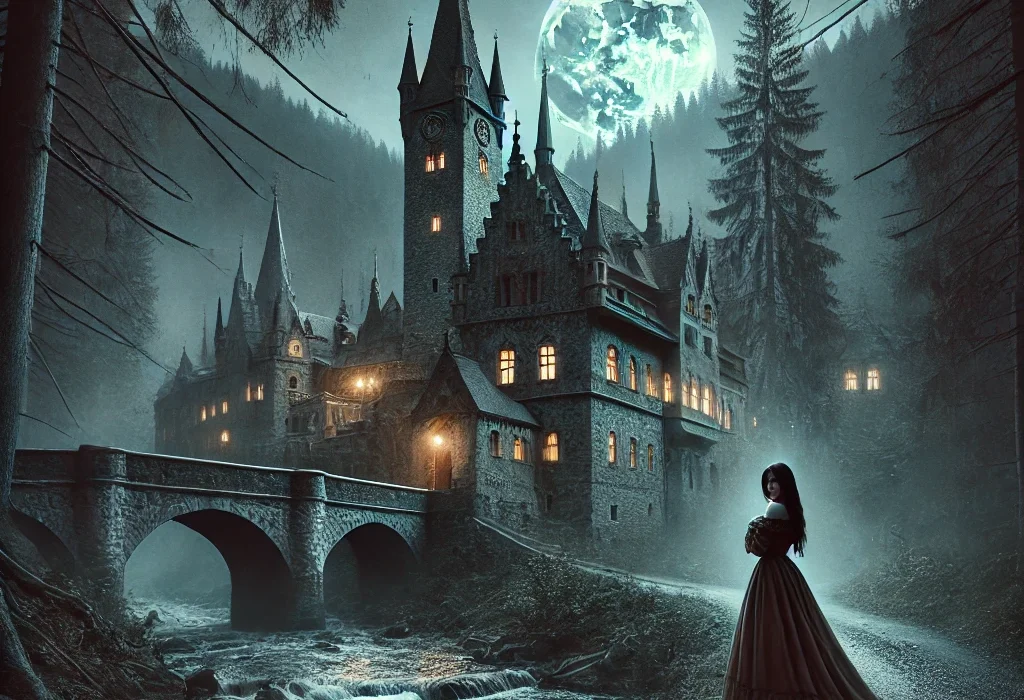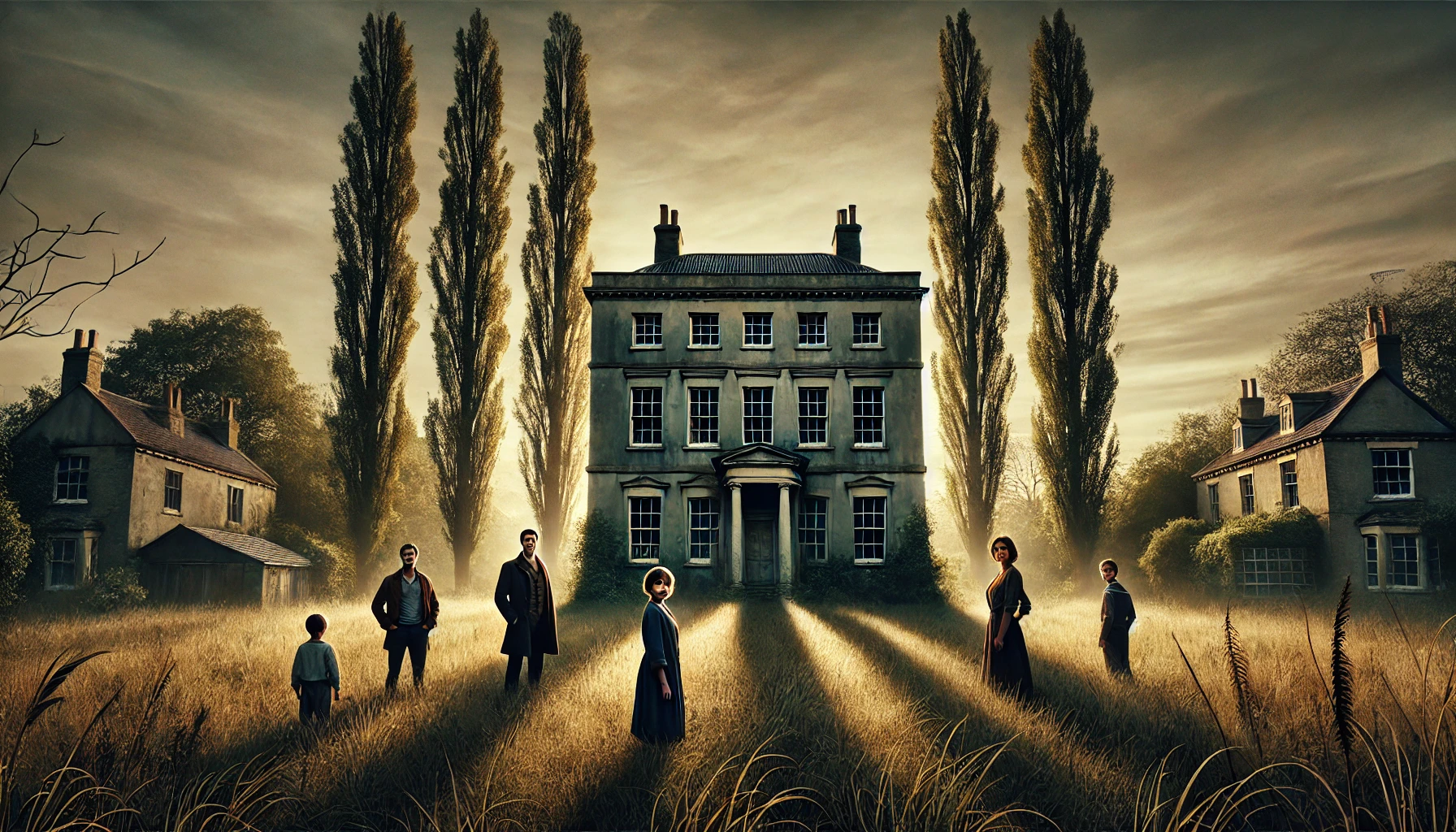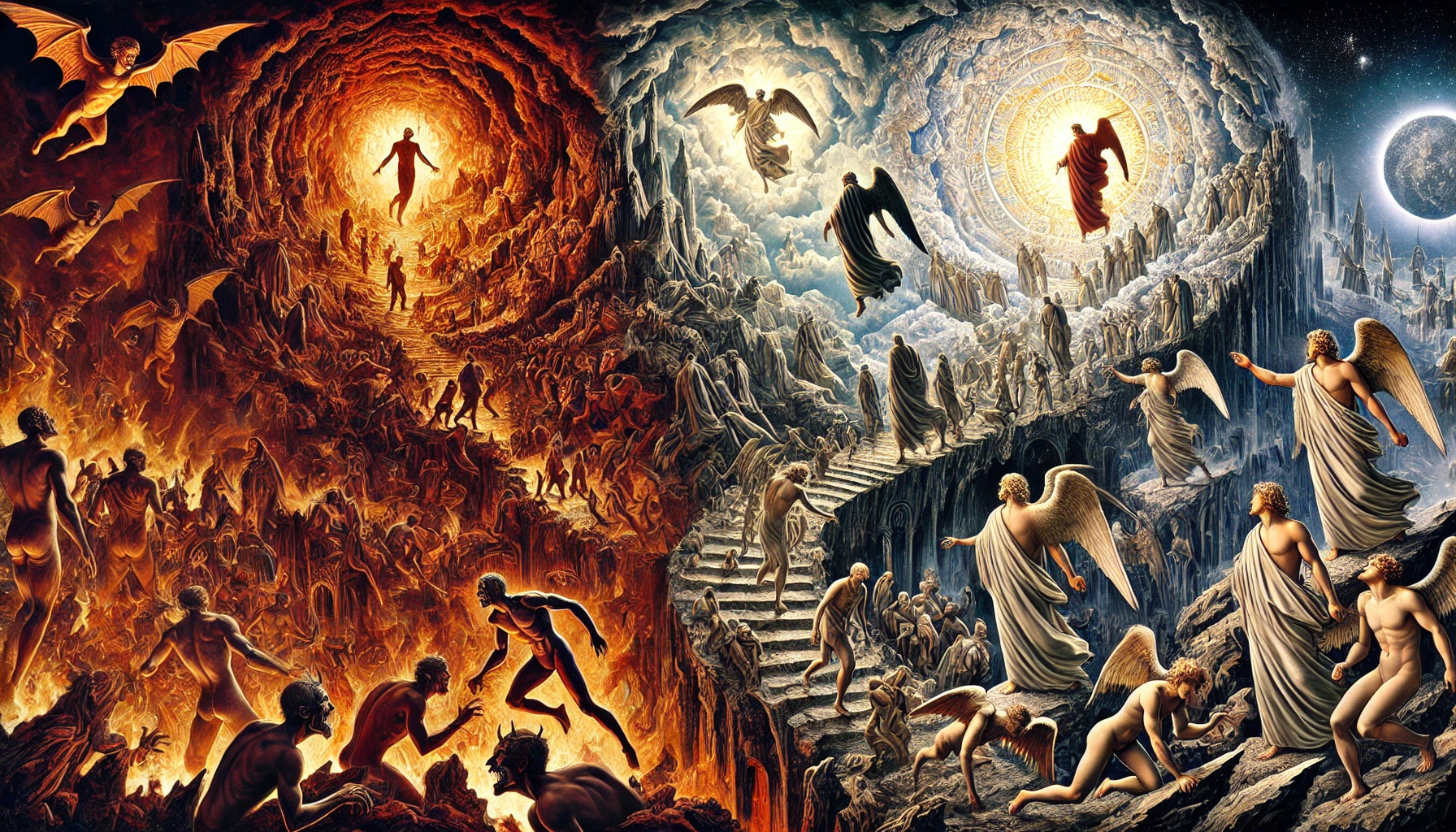Carmilla by Joseph Sheridan Le Fanu, first published in 1871, is a landmark work in the Gothic horror genre, introducing one of the earliest female vampires in literature. Set in the remote Austrian region of Styria, the novella narrates the chilling experiences of a young woman named Laura and her enigmatic friendship with the mysterious Carmilla. Le Fanu, a master of suspense and supernatural fiction, crafts a tale that explores themes of isolation, forbidden desires, and the uncanny through a richly atmospheric narrative.
Plot Summary
In a secluded castle nestled in the remote forests of Styria, a young woman named Laura lives a quiet, comfortable life with her father, a retired Englishman. Laura’s mother passed away when she was an infant, leaving her father as her primary guardian. Their household is small, consisting of a few servants and two governesses, Madame Perrodon and Mademoiselle De Lafontaine. Despite the serene beauty of their surroundings, Laura’s life is marked by a sense of isolation and a haunting memory from her childhood.
When Laura was six years old, she experienced a terrifying event. One night, she awoke to find a strange woman in her room, who comforted her but suddenly caused a sharp pain in her chest. The woman disappeared, leaving Laura confused and frightened. This incident left a lasting impression on Laura, making her susceptible to fears of the supernatural.
Years later, Laura’s life takes a dramatic turn when she learns that General Spielsdorf, a family friend, is planning to visit with his niece, Bertha Rheinfeldt. However, the visit is abruptly canceled when Laura receives a letter from the General, informing her that Bertha has died under mysterious circumstances. The General’s letter is filled with grief and rage, hinting at a sinister force behind Bertha’s death.
Shortly after this distressing news, a carriage accident occurs near Laura’s home. A beautiful young woman named Carmilla emerges from the wreckage, and her mother, in a hurry to continue her journey, leaves Carmilla in the care of Laura’s family. Carmilla, with her striking beauty and enigmatic demeanor, quickly forms an intense bond with Laura. Despite her charm, Carmilla exhibits strange behavior: she is prone to fits of melancholy, appears only late in the day, and speaks of dreams that eerily mirror Laura’s own.
As their friendship deepens, Laura begins to suffer from disturbing dreams and a gradual decline in health. She dreams of a large black cat-like creature entering her room and biting her on the chest. These dreams coincide with physical symptoms, such as pallor, fatigue, and a mysterious puncture wound on her chest. Despite these troubling signs, Laura remains irresistibly drawn to Carmilla, whose affection often borders on the obsessive.
Laura’s father grows increasingly concerned about her deteriorating health. He consults local doctors, who are baffled by her condition. Eventually, a specialist is brought in, who suggests that Laura’s symptoms are caused by a vampire. This diagnosis leads Laura’s father to contact General Spielsdorf, who arrives with crucial information about the vampire plaguing their region.
The General recounts his own tragic experience with Bertha, revealing that Carmilla is actually the vampire Mircalla, Countess Karnstein. This revelation shocks Laura and her father. The Karnstein family, once powerful and feared, had been notorious for their involvement in dark, supernatural practices. Determined to save Laura and put an end to Carmilla’s reign of terror, Laura’s father, the General, and a group of villagers set out to find Carmilla’s resting place.
They discover Carmilla’s tomb in the ruins of the Karnstein castle. Inside, they find her body, perfectly preserved and lying in a death-like trance. The men drive a stake through her heart, decapitate her, and burn her remains. This act breaks the vampire’s curse, and Laura’s health begins to improve. The haunting presence that had overshadowed her life is finally vanquished.
Laura, though physically recovering, remains psychologically scarred by her ordeal. The intense, almost hypnotic connection she shared with Carmilla lingers in her memory. The experience leaves her with a profound sense of loss and a lingering fear of the supernatural. As she reflects on the events that transpired, Laura grapples with the duality of her feelings for Carmilla—both the affection she felt for her as a friend and the horror of discovering her true nature.
Life slowly returns to normal in the castle, but the shadow of Carmilla’s influence is not easily dispelled. Laura and her father continue to be cautious, aware that the world is full of mysteries and dangers that cannot always be seen or understood. The tale of Carmilla serves as a chilling reminder of the thin veil between reality and the supernatural, and the enduring power of ancient evils.
Main Characters
Laura: The protagonist and narrator, Laura is a young woman living a secluded life in a Styrian castle. Her innocence and vulnerability make her an ideal target for Carmilla’s predations. Throughout the story, Laura grapples with her feelings of affection and fear towards Carmilla, ultimately being saved from the brink of death by her father and the General.
Carmilla/Mircalla: The titular character, Carmilla is a beautiful and enigmatic vampire who preys on young women. She forms an intense bond with Laura, marked by affection and supernatural influence. Her true identity as Mircalla, Countess Karnstein, reveals her as a centuries-old vampire responsible for numerous deaths.
Laura’s Father: A retired Englishman, Laura’s father is devoted to his daughter’s well-being. His practical and protective nature drives him to seek out the truth behind Laura’s illness and ultimately leads to Carmilla’s destruction.
General Spielsdorf: A family friend of Laura’s, the General provides crucial information about Carmilla’s true nature. His personal tragedy with the loss of his niece, Bertha, fuels his determination to hunt down and destroy the vampire.
Theme
Isolation and Loneliness: The remote setting of Laura’s castle underscores the themes of isolation and loneliness, making the characters more susceptible to supernatural influences. Laura’s solitary existence is both a physical and emotional state, amplified by her intense, exclusive relationship with Carmilla.
Forbidden Desire: The novella explores themes of forbidden desire and the blurring of boundaries between friendship and romantic attraction. Carmilla’s relationship with Laura is marked by a mix of affection, obsession, and predation, reflecting Victorian anxieties about same-sex relationships and female sexuality.
The Uncanny: Le Fanu masterfully uses the concept of the uncanny to create a sense of unease and horror. Familiar settings and relationships are rendered strange and threatening through the presence of the supernatural, particularly in Carmilla’s dual nature as both a friend and a predator.
The Supernatural and Rationality: The story juxtaposes supernatural occurrences with the characters’ attempts to rationalize them. Laura’s father and the General represent the rational, scientific approach to understanding and combating the vampire, highlighting the tension between belief in the supernatural and the need for empirical evidence.
Writing Style and Tone
Joseph Sheridan Le Fanu’s writing style in Carmilla is characterized by its rich, atmospheric descriptions and a slow-building sense of dread. He employs a first-person narrative, allowing readers to experience the events through Laura’s perspective, which adds an intimate and personal dimension to the horror. The tone is melancholic and suspenseful, with a focus on the psychological and emotional states of the characters.
Le Fanu’s use of Gothic elements, such as the remote castle, the mysterious and alluring antagonist, and the themes of death and decay, create a haunting and immersive reading experience. His ability to evoke a sense of the uncanny and to explore complex emotional and psychological terrain sets Carmilla apart as a seminal work in vampire fiction and Gothic literature.
We hope this summary has sparked your interest and would appreciate you following Celsius 233 on social media:
There’s a treasure trove of other fascinating book summaries waiting for you. Check out our collection of stories that inspire, thrill, and provoke thought, just like this one by checking out the Book Shelf or the Library
Remember, while our summaries capture the essence, they can never replace the full experience of reading the book. If this summary intrigued you, consider diving into the complete story – buy the book and immerse yourself in the author’s original work.
If you want to request a book summary, click here.
When Saurabh is not working/watching football/reading books/traveling, you can reach him via Twitter/X, LinkedIn, or Threads
Restart reading!








